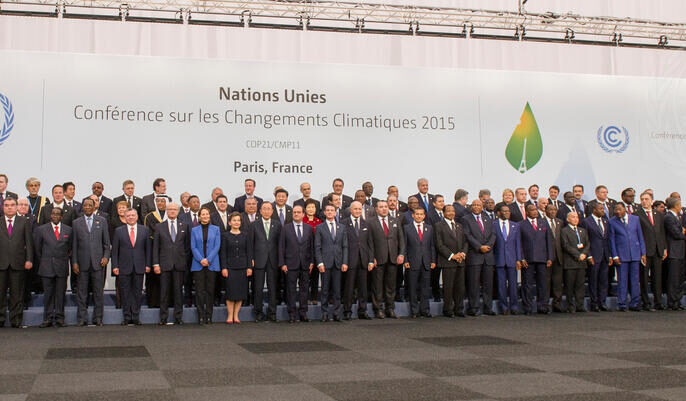U.S. Airlines Cut Flights as Many Corporations Limit Travel
Skift Take
With lucrative business travel drying up because of concerns about Coronavirus, U.S. airlines are taking aggressive action to cut flights, park airplanes and slash costs, with many executives saying Tuesday at an investor conference that they must reduce capacity to avert what could be the worst U.S. airline economic disaster since 9/11.
None, however, is moving as fast as United Airlines, where President (and future CEO) Scott Kirby is planning for what he calls a worst-case scenario. To stem short-term problems, United over the weekend finalized cuts for 10 percent of its April domestic capacity and 20 percent of its international capacity, but now expects to slash more flights this spring, Kirby told investors. In May it will cut at least 20 percent of total capacity, and in future months it plans cuts "at least as large or larger, until we see concrete signs of returning demand," he said.
"We have been taking early and aggressive action, because we have seen the impact of demand when the virus spreads," Kirby said.
Kirby, who becomes CEO in May, joined executives from other airlines at the JP Morgan Industrials Conference, an annual event. All the executives expressed concern about the current climate, but many tried to strike an optimistic tone, saying they can weather a short-term crisis. Some executives tried to play up positives, noting many leisure travelers are biting at discounted fares, even as corporate travelers stay home.
However, Kirby outlined a more dire scenario than most competitors. In the past four days, he said, gross bookings for transpacific routes have fallen 70 percent, compared to expectations, while gross bookings to Europe are off about 50 percent. In the domestic market, he said, domestic bookings are off only about 25 percent. But he added, "we're planning for the public concern about the virus to get worse before it gets better."
How bad, no one knows. But Kirby shared with investors what he said is a "dire case" scenario, in which leisure and business traffic falls more precipitously. He said United will be ready.
Kirby said it's possible revenue could be down 70 percent in April, 70 percent in May, 60 precent in June, 40 percent in July, 40 percent in August, 30 percent in September, 30 percent in October, and 20 percent in December. He said it may take 18 months before demand fully recovers.
"I suspect that sounds shocking to all to some of you, and for what it's worth, we don't expect it will be that bad," Kirby said. “But we're biased toward being too aggressive and taking action as opposed to running the risk of looking back at some point and wishing we had been more aggressive, sooner.
In a worst-case scenario, he said, everything will be on the table, including last-minute aircraft deferrals and employee furloughs.
JetBlue Also Sounding Alarm
Six airlines presented at Tuesday's JP Morgan conference, which took place over the telephone, rather than in person, because of Coronavirus fears. The only other airline executive to get close to Kirby's level of concern was Robin Hayes, CEO of JetBlue Airways. (Perhaps not coincidentally, United and JetBlue were the first two airlines to announce capacity cuts last week.)
"When I look at how the demand has deteriorated in the last couple of weeks, it appears to be worse than what we saw after 9/11," Hayes said.
For JetBlue, the picture changed on Feb. 25, when the airline began seeing a "significant and dramatic decline in forward bookings," Hayes said. The airline may need to make further schedule cuts than the 5 percent capacity decrease it detailed last week, he added.
Conventional wisdom suggests JetBlue should be better equipped to handle the drop in demand, since 80 percent of its business is leisure travelers. Most companies have significantly cut back on travel, which should disproportionately affect global carriers like United. Corporate traffic generally cannot be stimulated at any price.
Usually, though, leisure customers will fly if the price is right. But JetBlue isn’t seeing that, at least not yet.
"We'll see how this moves going forward" said Dave Clark, vice president of sales and revenue management. "But as of the latest, the two market segments were about roughly equally impacted for us."
Leisure Demand OK at Other Airlines
Other airlines executives also expressed concern, though none in as stark terms as United's Kirby.
Delta Air Lines has seen a 25-30 percent drop in net bookings over the past two weeks, CEO Ed Bastian said, and the airline is "prepared for it to get worse." To compensate, it plans to slash international flying by 20 to 25 percent, and domestic by 10 to 15 percent. In the short term, Delta executives said, the airline will park jets, but eventually it may retire some older airplanes earlier than expected.
"This clearly is not an economic event," Bastian said. "This is a fear event, probably more akin to what we saw at 9/11 and not necessarily what we saw in 2009. I think you're seeing a suspension of activities, whether it be corporate activities, group activities, events where people get together in large numbers, all of which impact our demand set."
American Airlines also will cancel some flying, but not much as much as its top two competitors. It is making a 10 percent cut in international flying, with more than half of that coming in transpacific sectors, and a 7.5 percent cut in domestic flying. American had already been flying fewer domestic flights than expected because of the Boeing 737 Max grounding.
American is also discounting flights, including departures several months out. CEO Doug Parker said. Under normal circumstances, an airline might not drop prices so far in advance, because its revenue management system would hold seats for last-minute business travelers, who pay high fares. But no one is sure when they will return, so Parker said American wants the revenue now. If business travelers return, American will make less money, but Parker called that a "a high-class problem," since the reemergence of corporate travelers will be good, overall.
Mostly Parker said, leisure travelers are responding well to the lower prices, since unlike business travelers, they are not limited by corporate decree. "There's real demand for air travel," Parker said.
Alaska Airlines reported a similar dynamic. The airline "tested" a fare sale last week to see if customers would respond, President Ben Minicucci said, and found results encouraging. "There still appears to be demand for travel, which is good news," he said.
Still, Alaska is suffering just like the others. In the past 15 days, Minicucci said, Alaska has seen 265,000 fewer bookings in March than last year, and 270,000 more cancelations.
Alaska does not plan cuts for April, but likely will cull flights in May. It will target flights it expects might lose money, including underperforming red-eyes, Minicucci said.
Spirit In Unusual Situation
In a typical downturn, ultra-low-cost-carriers often perform best, because travelers trade-down to no-frills airlines. Spirit Airlines has the lowest costs in the industry, so it can make money selling $49 tickets when a competitor cannot.
As CEO Ted Christie put it on Tuesday, "Anyone can sell low fares, the issue is who can sell low fares at a profitable level?"
But it’s too soon to see those dynamics play out. Major airlines know business travelers aren't booking, and those airlines need revenue, so for now, big carriers are dropping prices to Spirit's levels to fill planes. It's probably not a viable long-term strategy for higher-cost airlines, but for now it works, and it hurts Spirit.
The airline plans to cut 5 percent of its April capacity and is evaluating its May plans, executives said. Spirit expects to cancel flights on off-peak days, like Tuesday, Wednesday and Saturday, and on routes where it has multiple flights each day.




